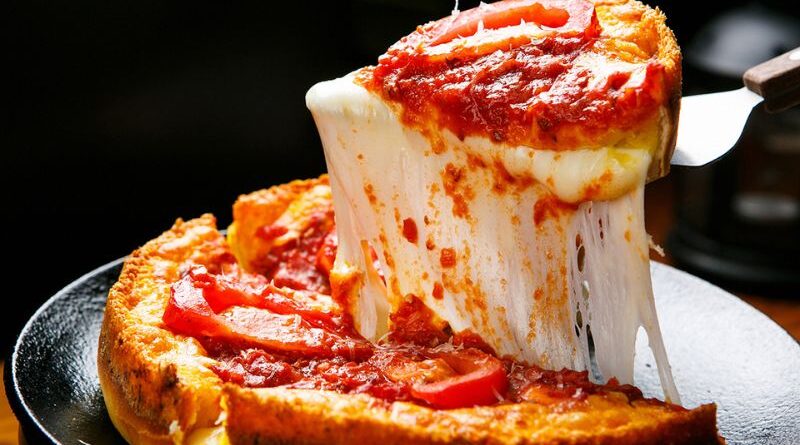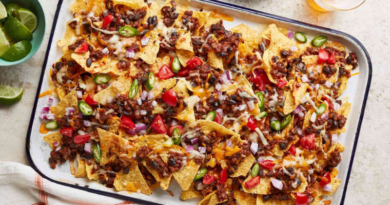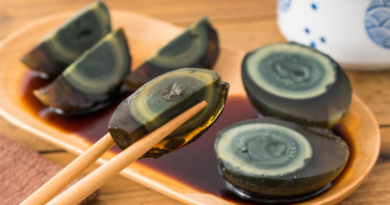Many Americans have never tried 10 classic foods, even though they are deeply rooted in U.S. culture. These foods range from comforting meals to unique American creations, representing what makes the country distinctive. From iconic casseroles and grits to quirky snacks like Twinkies and Spam, these dishes are often associated with American tradition and identity. Despite their cultural significance, many people haven’t experienced them due to personal taste preferences or unfamiliarity. Can you truly call yourself a “true American” without trying these foods? While it’s debatable, they definitely remain an important part of American culinary history.
Top 10 Classic American Foods
1. American-Style Casseroles

American-style casseroles, such as tuna noodle or green bean casserole, have been a staple at family dinners and holiday gatherings for generations. These comfort foods, known for their creamy, cheesy texture and hearty ingredients, are an iconic part of American home cooking. However, despite their status, many Americans have never actually experienced these casseroles. Some people grew up in families with different cultural backgrounds, where casseroles weren’t part of the menu. Others may not have had the chance to try them because they were unfamiliar with this genre of food. While casseroles have become synonymous with American tradition, many of today’s younger generations are more drawn to fast food or international cuisines than to these oven-baked dishes.
Additionally, some find the ingredients in these casseroles too heavy or overly processed, contributing to their avoidance. Still, for those who love them, these casseroles remain an enduring symbol of American family meals.
Also Read- 7 Classic Desserts From The ’50s Worthy Of A Comeback
2. Spam

Spam, a canned meat product made from a blend of pork and chicken, is often considered a quintessential American food, especially in Hawaii where it’s become part of the local cuisine. It’s used in a variety of recipes, from Spam musubi to sandwiches and even stir-fries. Despite its iconic status, Spam has developed a controversial reputation. Many Americans avoid Spam due to its processed nature and the fact that it’s high in sodium, preservatives, and artificial additives. Its texture and taste are often described as unappetizing, and its long shelf life, while convenient, doesn’t exactly scream freshness.
The perception that it’s unhealthy further drives many away, with some opting for fresher, less processed alternatives. In the age of healthier eating trends, Spam is less popular than it once was, though it still holds a nostalgic place for those who grew up eating it. For others, it remains a food to be avoided.
3. Grits

Grits, a dish made from ground corn, is often seen as an essential part of Southern cuisine, but it’s not universally loved. While grits are commonly served for breakfast or as a side dish with fish, shrimp, or gravy in the Southern U.S., many Americans find them unappetizing. The texture of grits is often described as gritty and unrefined, which turns some people off. For others, the blandness of grits is another turnoff. Without proper seasoning or flavorful toppings, grits can taste like a bland, mushy mass, which makes it difficult for some people to enjoy.
Even though grits are beloved by many in the South, they are often viewed as an acquired taste that doesn’t appeal to everyone. Additionally, because grits require careful preparation and seasoning to be truly delicious, many Americans simply skip them in favor of more universally liked breakfast dishes like pancakes or cereal.
4. Jello Salads

Jello salads, a strange yet uniquely American invention, have baffled both Americans and international audiences alike. These salads, often made with Jello and a mixture of fruits or even vegetables like celery, are a colorful addition to many family gatherings and holidays. While the bright colors may seem appealing, the texture and flavor combinations are often what turn people off.
The gelatinous consistency combined with ingredients like cottage cheese, mayonnaise, or whipped cream creates an unusual mouthfeel that many find unappetizing. Even simple fruit Jello salads can be off-putting due to their slippery texture and overly sweet taste. Many view these concoctions as odd, and with the growing awareness of healthier eating, these gelatin-based salads have largely fallen out of favor. As a result, many Americans avoid making or eating Jello salads, and they’re often seen as a relic of past decades rather than a modern dish.
5. Twinkies

Twinkies are a snack cake filled with a sugary, creamy filling, and they’ve been an iconic part of American snack culture for decades. Despite their fame, however, many Americans don’t enjoy Twinkies as much as their reputation might suggest. The spongy cake and artificial cream filling, while sweet, are often described as oily and overly processed. While Twinkies were once the go-to snack for kids and busy adults alike, their taste and texture have turned many off. The cakes, which have a long shelf life, can also feel stale or overly dry compared to fresher baked goods.
Additionally, the artificial ingredients and preservatives that help Twinkies stay fresh for months are a major deterrent for those who prefer more natural snacks. Despite being nostalgic for many, the oily texture and overly sweet filling make them less appealing to a growing number of health-conscious Americans who prefer other snack options.
6. Frybread

Frybread is a type of flatbread that is deep-fried and often served as a snack or base for dishes like Indian tacos. Its origin traces back to Native American culture, where it was created using limited ingredients provided by the U.S. government, making it a symbol of both resilience and resourcefulness. However, despite its historical significance, frybread doesn’t always win over American palates. Some people find the greasy texture and heavy, fried taste unappealing, while others struggle with its dense, chewy texture.
Frybread is often associated with fairs and festivals, but it’s not commonly served in many households. While it can be enjoyed when paired with savory toppings, like chili or cheese, its basic version is too simple or bland for some people’s tastes. Moreover, the high fat content and frying process make frybread less attractive to health-conscious eaters. As a result, it remains a niche food rather than a mainstream favorite.
7. Cheese Wiz

Cheese Wiz, a processed cheese spread that’s often used as a topping for nachos, pretzels, and even burgers, has been marketed as a staple of American snack culture. Despite its heavy promotion in advertisements and its frequent appearances in sports stadiums, Cheese Wiz is not as popular as one might think. Many Americans are put off by the artificial, processed flavor of the product, which doesn’t resemble real cheese. The texture is often described as slimy or runny, and the bright yellow color is more off-putting than appetizing.
Most people prefer real cheese, whether it’s melted on a pizza or used in sandwiches. For those who want a cheese dip or sauce, many opt for homemade versions made with real cheese and fresh ingredients. As more people move toward whole foods and less processed options, Cheese Wiz continues to decline in popularity, and most Americans are content to skip this synthetic cheese product.
8. Eggnog

Eggnog, a creamy, spiced drink made with milk, sugar, and eggs, is a holiday tradition in many American households, but it’s not universally loved. For some, the thick, custard-like texture and the strong flavors of nutmeg and cinnamon can be off-putting. Additionally, many eggnog recipes contain alcohol, such as rum or bourbon, which limits its appeal to those who don’t drink or prefer non-alcoholic beverages.
The drink’s rich, heavy nature can be overwhelming, especially in large quantities, and some find it too sweet for their taste. Over time, eggnog has fallen out of favor with younger generations, who are more likely to enjoy lighter, fruit-based drinks during the holidays. Even though eggnog is often associated with festive gatherings and Christmas cheer, its unique flavor and texture make it a beverage that many Americans don’t choose to drink, leading to its decline in popularity.
9. Pork Rinds

Pork rinds, also known as chicharrones, are crispy, fried pieces of pig skin that have been gaining popularity among certain diet groups, particularly those following keto or low-carb diets. Despite their newfound popularity, pork rinds are not a beloved snack among most Americans. Many people are put off by the strong, often greasy odor that wafts from the bag as soon as it’s opened. The texture of pork rinds, which can be hard and crunchy or airy and light, doesn’t appeal to everyone. They are also considered messy to eat, leaving residue on fingers, which detracts from their enjoyment.
While some people enjoy the salty crunch of pork rinds, many avoid them due to the high-fat content and the unappealing smell. Because they are a niche snack, pork rinds have not achieved widespread popularity, and they remain a more acquired taste for those who appreciate them.
10. Lobster

Lobster is considered a luxurious and expensive seafood delicacy, often served in high-end restaurants or during special occasions like holidays and seafood feasts. However, lobster is not a food that most Americans eat regularly. The high cost of lobster—due to its limited availability and the labor involved in catching and preparing it—makes it out of reach for many people. Even if they can afford it, some are hesitant to try lobster because of its strong, sometimes overwhelming seafood flavor.
The texture of lobster, which is both tender and slightly chewy, can also be off-putting to people who are not accustomed to shellfish. Because lobster is usually reserved for special occasions, many Americans simply don’t have the opportunity to try it. As a result, lobster remains a rare treat for those willing to spend the money or visit a fine dining restaurant that serves this luxury food.
For More- 10 of the Worst Rated American Seafoods You Should Avoid
Conclusion
While many classic American foods have become staples in U.S. culture, it’s surprising that some are still unfamiliar to many people. Whether it’s the creamy texture of grits, the unique combination of ingredients in Jello salads, or the acquired taste of Spam, these foods have made their mark in American kitchens, yet not everyone has had the chance to try them. Whether you’re a fan or not, these dishes represent the diversity and history of American cuisine, offering a taste of what shaped the country’s food traditions. So, the next time you’re curious about trying something new, why not give one of these classics a shot?
FAQs
Common American casseroles include tuna noodle casserole, green bean casserole, and macaroni and cheese. These dishes often combine a protein, vegetables, and a creamy sauce, making them hearty and comforting.
Lobster is considered a delicacy due to its labor-intensive harvesting process, its limited availability, and its high demand in fine dining. These factors contribute to its high price, making it a rare treat for most Americans.







